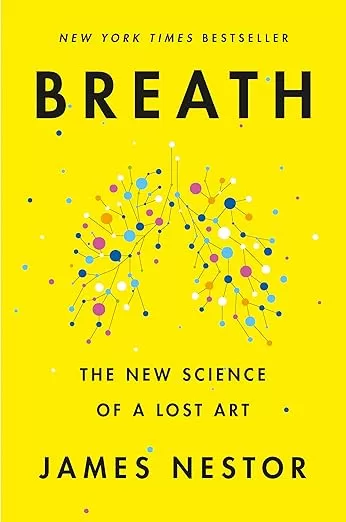Craniosacral Therapy for Brain Health: Gentle Healing Through Mindful Touch
Discover how Upledger craniosacral therapy uses gentle manual techniques and biomechanical listening to support natural brain healing and nervous system wellness.
In our fast-paced world, many of us are drawn to gentler, more nurturing approaches to health and healing. Craniosacral therapy (CST) offers a beautiful pathway to brain wellness through the profound power of mindful touch and biomechanical awareness. This manual therapy embraces the craniosacral system—the delicate membranes and cerebrospinal fluid that surround and protect our brain and spinal cord.
What is Craniosacral Therapy? Understanding the Craniosacral System
The craniosacral system operates on its own natural rhythm, distinct from heartbeat and breathing patterns. This intricate system includes the bones of the skull, face, and mouth, extending down to the sacrum at the base of the spine. Cerebrospinal fluid flows within this system, nourishing and protecting the central nervous system while removing waste products.
Craniosacral therapists are trained to detect the subtle movements and rhythms of this system through light touch, typically using pressure no greater than the weight of a nickel. This sensitive palpation allows practitioners to “listen” to the body’s inherent wisdom and identify areas where natural movement may be restricted.
Manual Biomechanical Listening: The Heart of Craniosacral Therapy
Central to craniosacral therapy is the concept of biomechanical listening—a practice that requires practitioners to develop extraordinary sensitivity in their hands and awareness in their touch. This listening involves:
Tuning into Subtle Body Rhythms
Practitioners learn to feel the gentle expansion and contraction of cranial bones, the flow of cerebrospinal fluid, and the movement of fascial tissues throughout the body.
Following Natural Movement Patterns
Instead of imposing corrections, skilled craniosacral therapists follow the body’s natural movements and allow the system to find its own path toward balance.
Whole-Body Awareness Integration
While focusing on the head and spine, practitioners maintain awareness of how restrictions in one area may affect the entire body system. They can also touch anywhere on the body and feel the rhythm. In the Upledger protocol, there are 10 basic steps to listen from a whole body perspective.
Mindful Cranial Sensitivity: The Therapeutic Power of Presence
The therapeutic power of craniosacral work lies not just in technique, but in the quality of presence and intention that practitioners bring to their touch. This mindful cranial sensitivity involves:
Present-Moment Therapeutic Awareness
Practitioners cultivate a state of calm, focused attention that allows them to detect the most subtle changes in tissue quality and movement.
Non-Invasive Healing Touch
Rather than manipulating or adjusting, therapists often simply hold space for the body’s natural healing processes to unfold. This gentle holding can create a sense of safety that allows deep relaxation and self-correction. This is different than energy work though, because CST is based in science and working with the anatomy and physiology of the body.
Therapeutic Stillness and Deep Listening
Sometimes the most powerful moments in a craniosacral therapy session occur in stillness, where both practitioner and client experience a profound sense of peace and connection.
Craniosacral Therapy Benefits for Brain Health and Healing
Improved Brain Circulation and Fluid Flow
By addressing restrictions in the craniosacral system, therapy helps optimize the flow of cerebrospinal fluid and blood circulation to the brain, supporting optimal brain health.
Natural Stress Reduction and Nervous System Regulation
The deeply relaxing nature of craniosacral work activates the parasympathetic nervous system, promoting the body’s natural healing responses and reducing the harmful effects of chronic stress on brain function.
Enhanced Sleep Quality for Brain Recovery
Many clients report improved sleep patterns following craniosacral therapy sessions, which is crucial for brain detoxification and memory consolidation.
Emotional Release and Mental Well-being
The gentle, supportive environment of craniosacral therapy can facilitate the release of stored emotional tension, supporting mental and emotional well-being.
Central Nervous System Support
By working with the central nervous system directly, craniosacral therapy helps improve overall nervous system function and resilience.
The Healing Power of Therapeutic Relationship in Craniosacral Work
One of the most profound aspects of craniosacral therapy is the quality of therapeutic relationship it fosters. The practitioner’s mindful presence and gentle touch create a safe space where the client’s nervous system can shift out of protective, high-alert states and into modes that support healing and regeneration.
This therapeutic holding—both physical and energetic—can be particularly beneficial for individuals who have experienced trauma, chronic stress, or neurological challenges. The non-invasive nature of craniosacral work makes it accessible to people of all ages, from newborns to elderly individuals.
The Individual Journey: Unique Healing Experiences
One of the most powerful aspects of craniosacral therapy is that it honors the deeply personal nature of healing. Each person’s experience with craniosacral work is entirely unique, reflecting their individual body wisdom, life experiences, and healing needs. What emerges during a session—whether it’s deep relaxation, emotional release, physical relief, or subtle energetic shifts—is completely individual to each person.
Some clients feel profound changes immediately, while others notice gradual shifts over time. Some experience physical sensations like warmth or tingling, while others feel emotional releases or simply a deep sense of peace. This subjective healing experience is not only normal but celebrated in craniosacral work, as it reflects the body’s own intelligence guiding the healing process.
Real-World Results: Case Studies and Individual Benefits
While each person’s journey with craniosacral therapy is unique, individual case studies consistently show remarkable benefits for people dealing with various health challenges:
Chronic Pain Relief: Individual case studies document significant improvements in people suffering from chronic headaches, fibromyalgia, and persistent musculoskeletal pain. Many clients report not just pain reduction, but an improved relationship with their body and enhanced quality of life.
Stress and Anxiety Support: Personal accounts reveal how craniosacral therapy helps individuals manage chronic stress, anxiety, and trauma responses. Case studies show improvements in sleep quality, emotional regulation, and overall nervous system resilience.
Concussion and Brain Injury Recovery: Individual case studies highlight the potential of craniosacral work in supporting people recovering from concussions and mild traumatic brain injuries. Clients often report improvements in symptoms like headaches, dizziness, cognitive fog, and emotional instability that can persist after head injuries.
These individual success stories remind us that while healing is deeply personal, the gentle power of craniosacral therapy consistently creates space for the body’s natural recovery processes to unfold in their own perfect timing.
A Holistic Path to Brain Wellness
Craniosacral therapy offers a beautiful integration with your overall wellness journey. The gentle nature of this work creates space for deep healing while honoring your body’s innate wisdom. Many people find that craniosacral sessionsenhance their overall sense of well-being and support their body’s natural capacity for self-healing.
Finding Qualified Craniosacral Therapists
For those interested in exploring craniosacral therapy, it’s essential to seek out properly trained practitioners. Look for certified craniosacral therapists who have completed comprehensive training programs and maintain continuing education in this specialized field. Many practitioners are also licensed healthcare providers such as massage therapists, physical therapists, or osteopathic physicians.
What to Look for in a Craniosacral Practitioner:
- Craniosacral therapy certification from recognized training institutes
- Ongoing continuing education in craniosacral techniques
- Experience with manual biomechanical listening
- Training in mindful touch and therapeutic presence
- Understanding of the craniosacral system and nervous system function
Conclusion: Embracing Gentle Brain Healing Through Craniosacral Therapy
Craniosacral therapy opens a doorway to the body’s remarkable healing wisdom through the practice of mindful, sensitive touch. By learning to listen deeply to the subtle rhythms of the craniosacral system and offering gentle, supportive presence, practitioners create sacred space where the brain’s natural healing processes can flourish.
The practice reminds us that healing often happens not through force or intervention, but through the simple yet profound act of being truly present with another person’s experience. In our increasingly busy world, the gentle power of mindful healing touch offers us a pathway back to our innate wholeness and the remarkable healing capacity that lives within each of us.
Whether you’re navigating stress, seeking to nurture your brain health, or simply feeling called to explore gentle approaches to wellness, craniosacral therapy offers an invitation to slow down, tune in deeply, and trust in the profound healing capacity that flows through us all.
Ready to experience the gentle healing power of craniosacral therapy? Find a qualified craniosacral therapist near you and discover how this mindful approach to brain health can support your wellness journey.
Sharon Hartnett CST-D
614 653-8111
www.craniosacraltherapistcolumbus.com
For more question and answers about the Craniosacral Therapy Sessions go to FAQ page.









